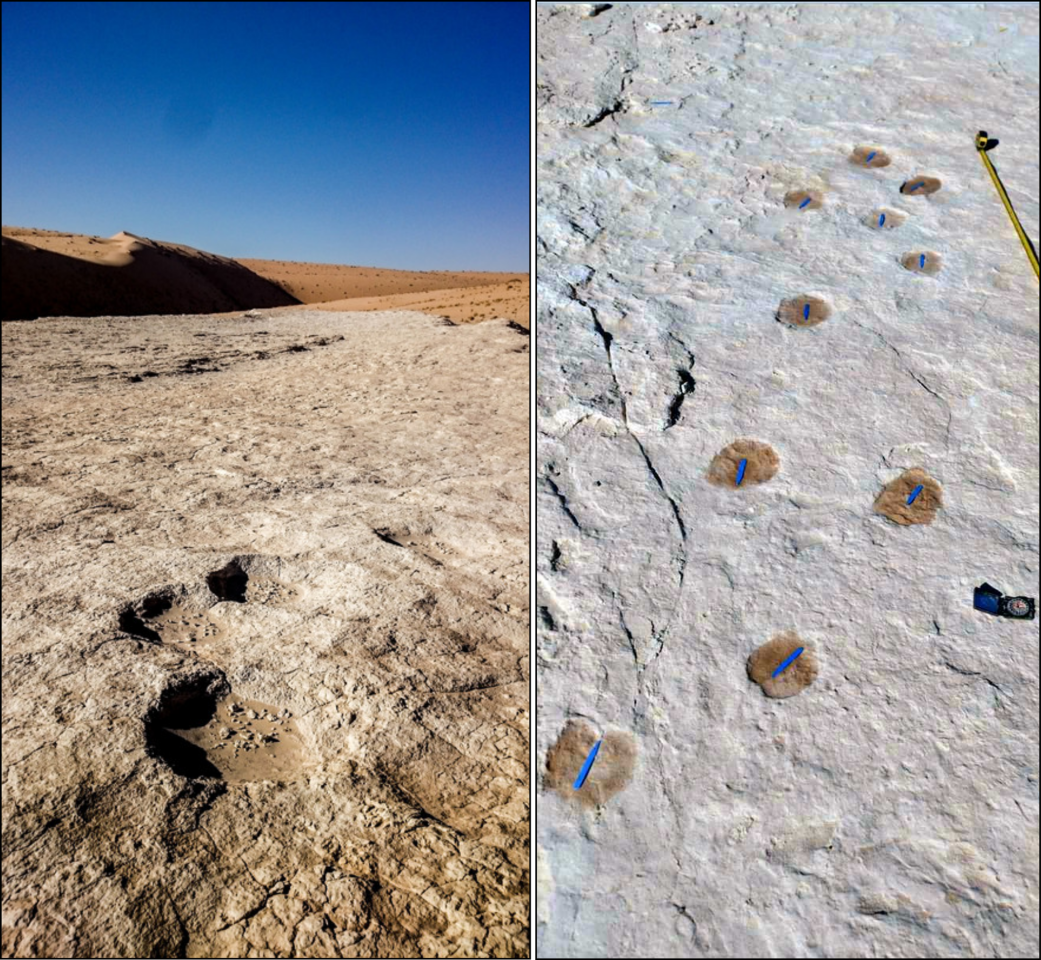Archeologists have discovered fossilized human footprints in Saudi Arabia that help fill in the story of the early migration of our species. Dating back 120,000 years, the tracks are the oldest evidence of the presence of modern humans on the Arabian Peninsula.
The footprints were discovered in the south-western region of the Nefud Desert, on the site of what was once semi-arid grasslands dotted with lakes. The team identified 376 prints made by an assortment of creatures, including humans.
“Of those, elephants and camels were the most abundant, yet there was also buffalo and horses in the area at that time,” says Julien Louys, an author of the study. “It was only the presence of freshwater lakes in the region that made the area so habitable for such a diverse community of elephants, camels, oryx, horses, buffaloes and humans.”
The team was even able to pinpoint that the human prints were made by two or three individuals walking together. They seemed to have been following the footprints of the other animals, and their visit appeared to be transient – they were likely stopping by the area to drink and forage before moving on.

Palaeodeserts Project
To figure out how old the prints were, the researchers used a dating technique called Optically Stimulated Luminescence (OSL). Quartz grains were extracted from within the sample, then hit with light. The specific way they glow can be measured and interpreted to determine when the grains were last exposed to sunlight.
In this case, that was 120,000 years ago. That helps to patch up some holes in our timeline of ancient human migration, the team says.
“In human migration out of Africa there is evidence of early humans older than 100,000 years in the Near East (Israel) and in Asia, but until now we have had no evidence of what happened in Arabia; the area in between,” says Mathieu Duval, an author of the study. “So this discovery in the region dated to within the last interglacial period fills a significant knowledge gap in our understanding of the origin and dispersal of our species.”
The research was published in the journal Science Advances.
Source: Griffith University
Source of Article